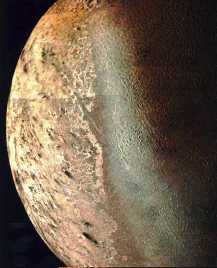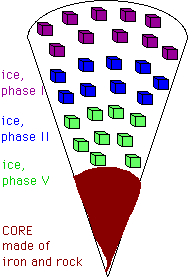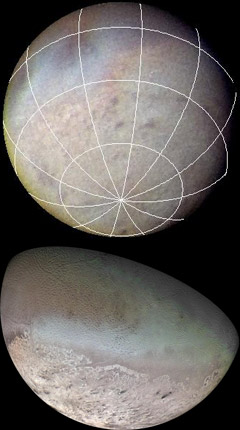This is an image of Triton that has been image processed.
Click on image for full size
NASA
Surface of Triton
Image processing can produce a view such as one might see if you were present on the surface of Triton.
You might also be interested in:

What types of instructional experiences help K-8 students learn science with understanding? What do science educators teachers, teacher leaders, science specialists, professional development staff, curriculum designers, school administrators need to know to create and support such experiences?
...more
This gorgeous image of Triton reveals many interesting features of its surface. The surface of Triton is halfway between that of Ganymede and that of Europa, of the Galilean satellites. There are portions
...more
Triton was discovered by W. Lassell in 1846. Of the 8 moons, it is the 2nd farthest from Neptune, with a standoff distance of 354,800 km. Triton may be one of the largest of the icy moons, is comparable
...more
Composition is generally determined by detailed measurements of the spectra of an object. Spectral measurements of the surface of Triton reveal the presence not only of ice but of several different kinds
...more
The diagram to the left shows a cutaway of the possible interior structure of Triton. The composition of Triton is mostly ice, therefore there is probably a small core of some rocky material buried inside,
...more
Triton is by far the largest moon of Neptune, and is one of the most unusual large moons in the Solar System. The poles of Triton are especially interesting. Triton has a frozen polar cap with ice geysers.
...more
The atmosphere of Neptune is very similar to that of Uranus, and unlike that of Saturn and Jupiter. On Jupiter and Saturn, the atmosphere is mostly composed of the simple molecules hydrogen and helium.
...more
There are four ideas for the origin of a planetary atmosphere. Those four ideas are: 1. that the planet-elements of which a planet was made decomposed and released the atmosphere, 2. that the atmosphere
...more









